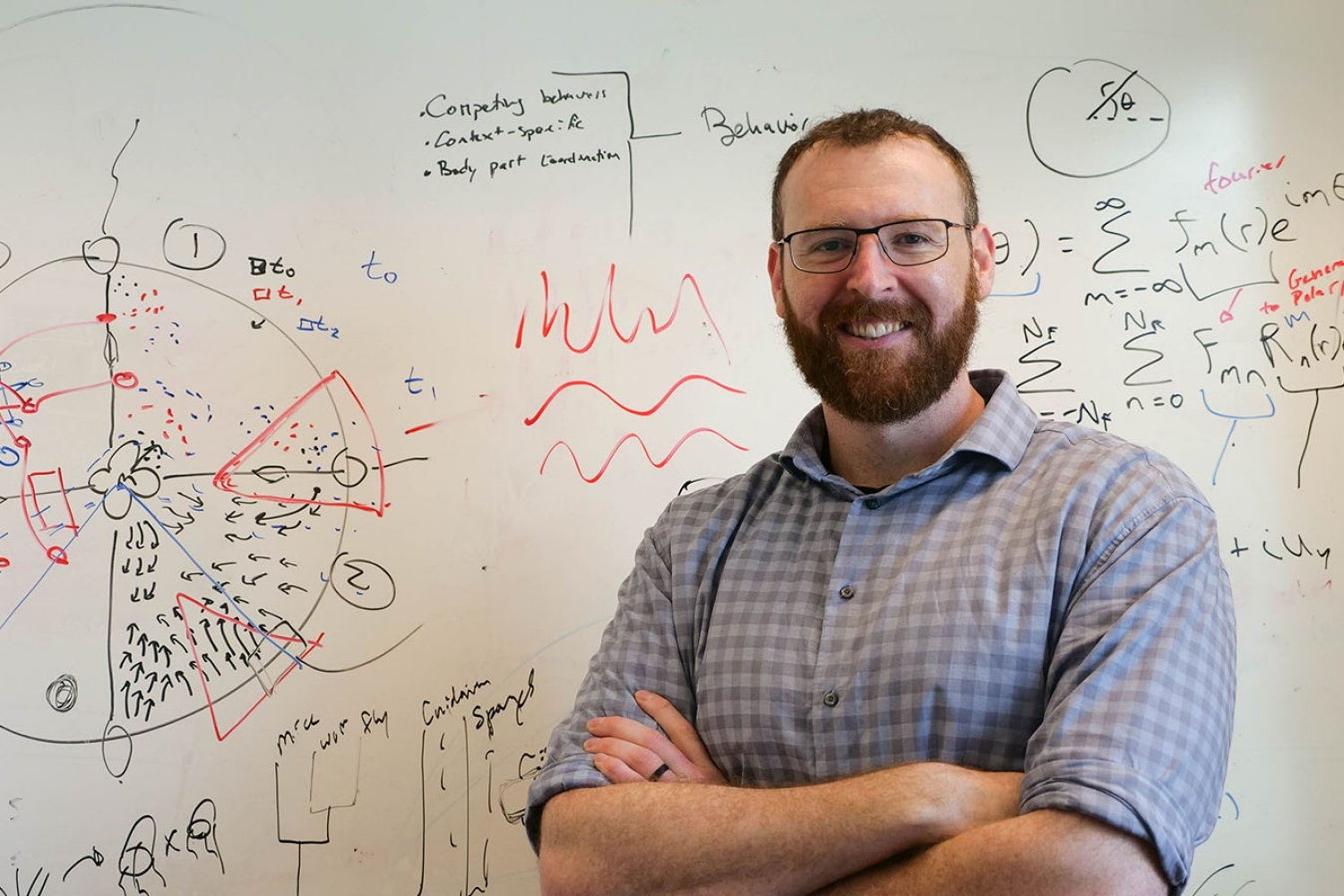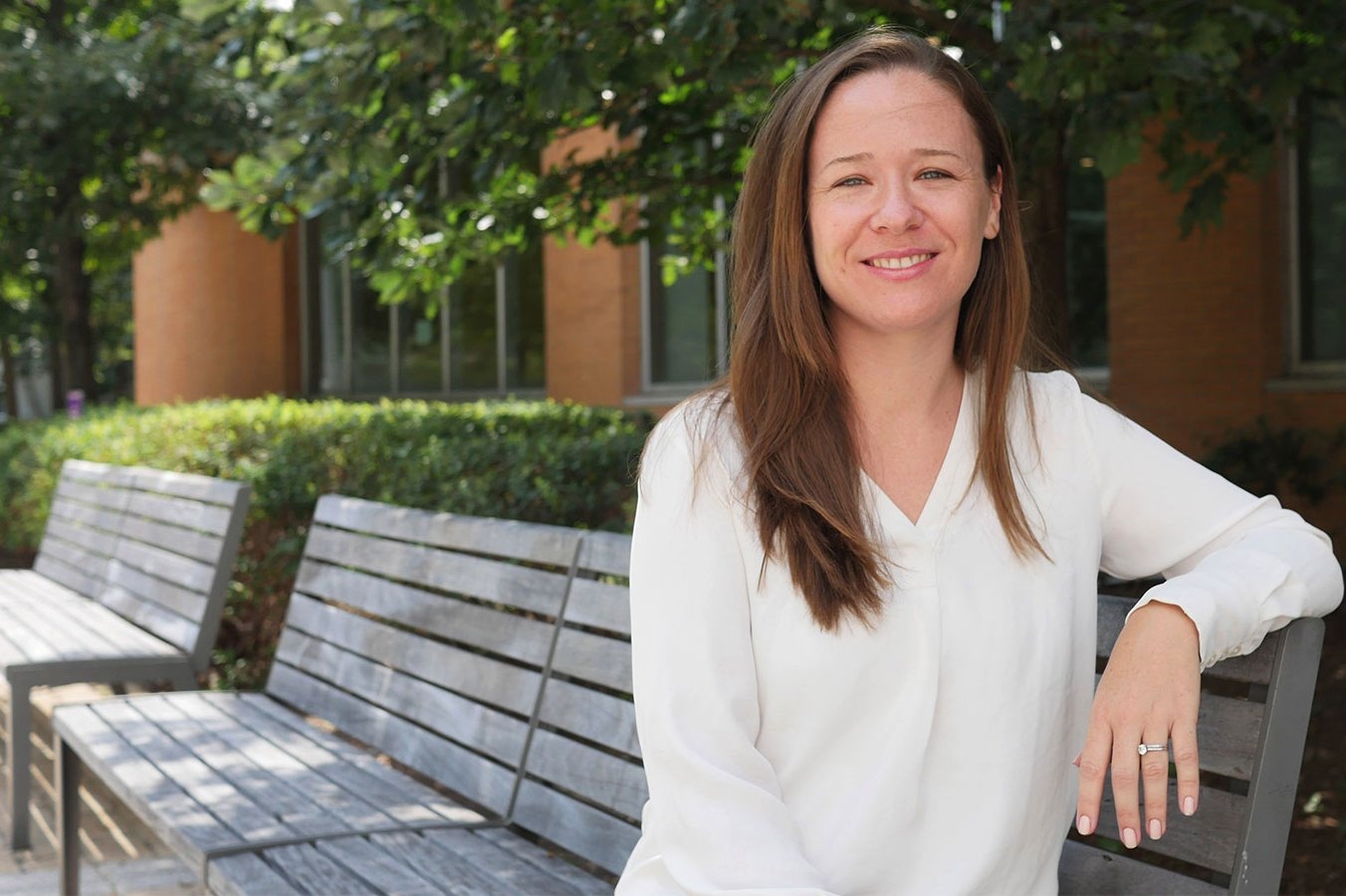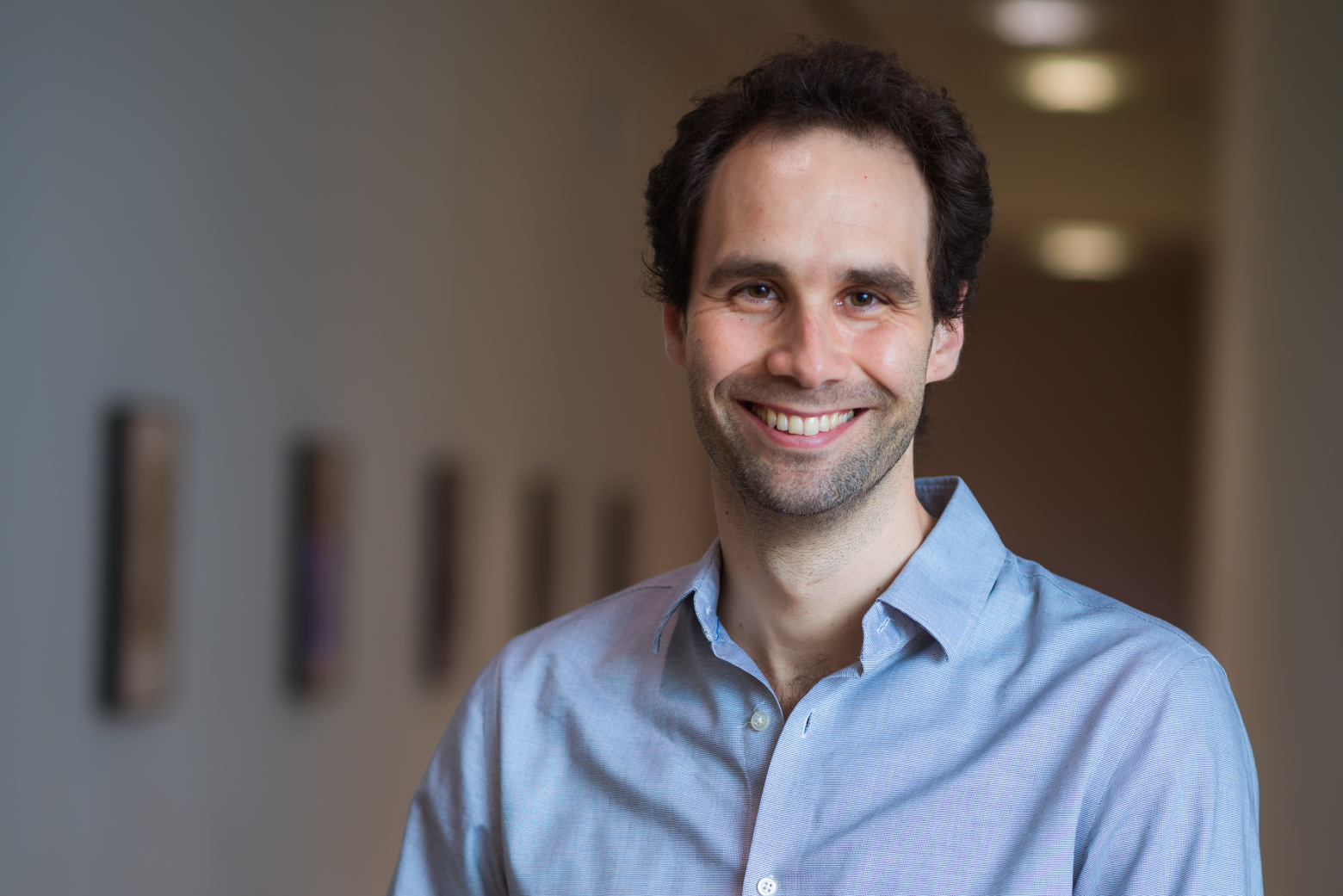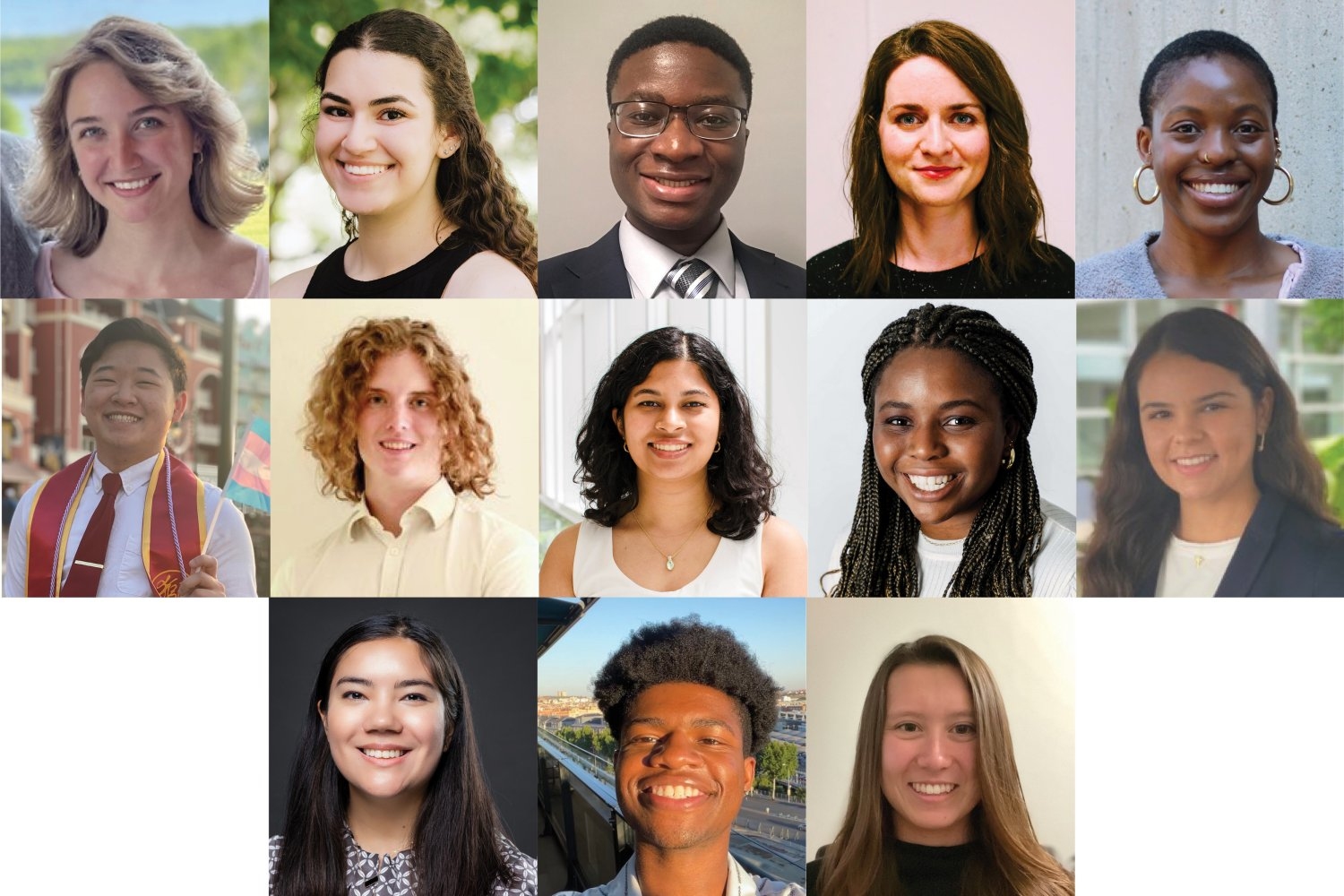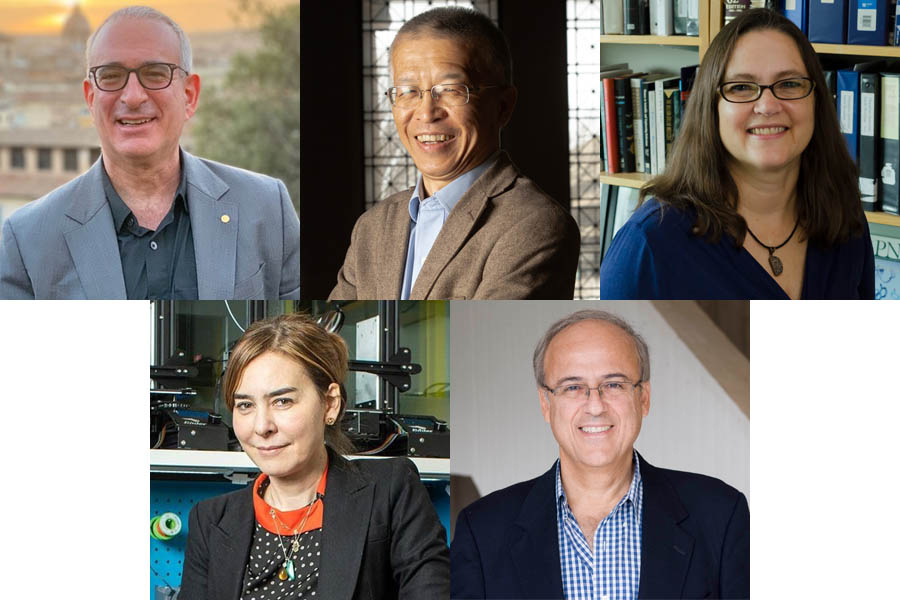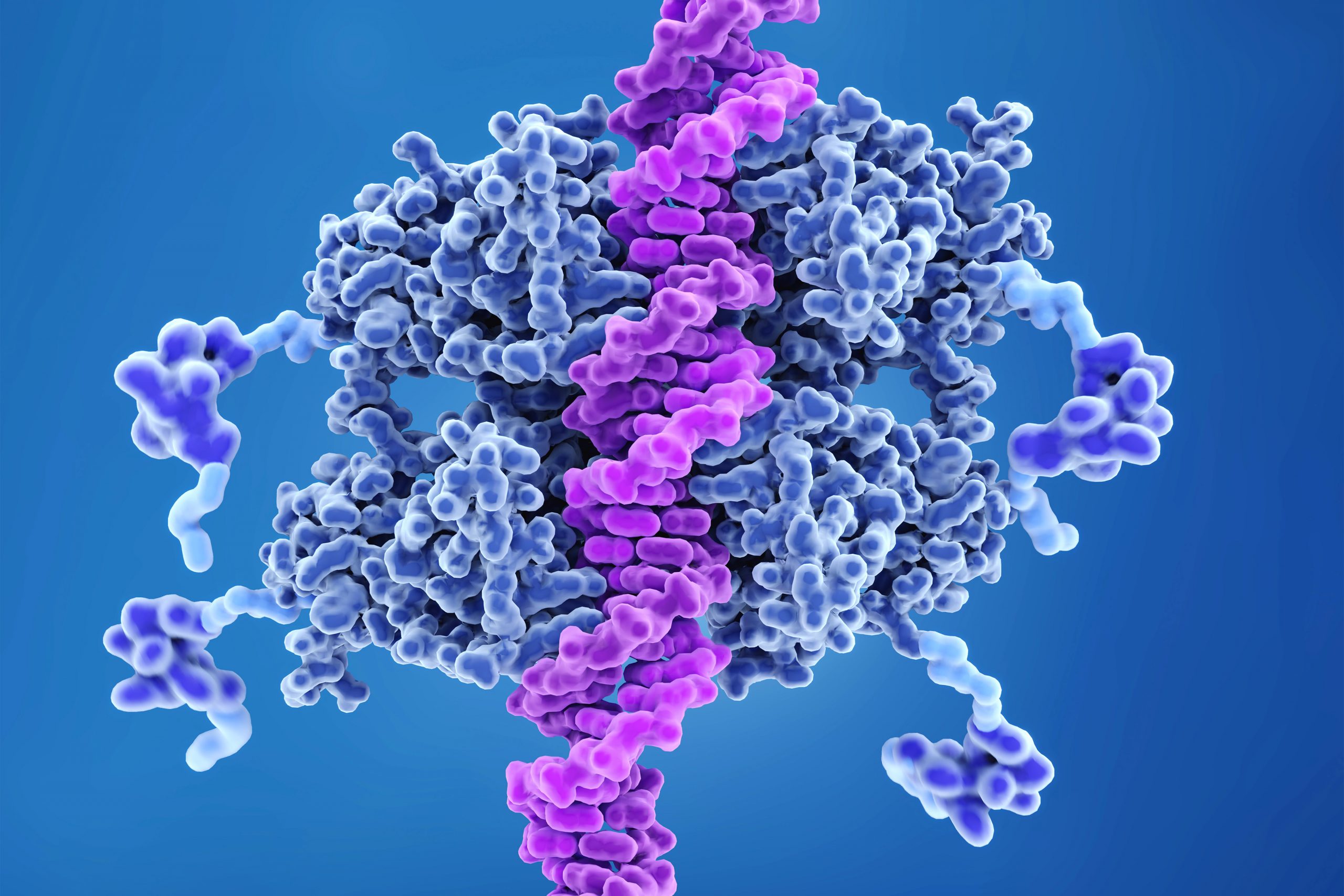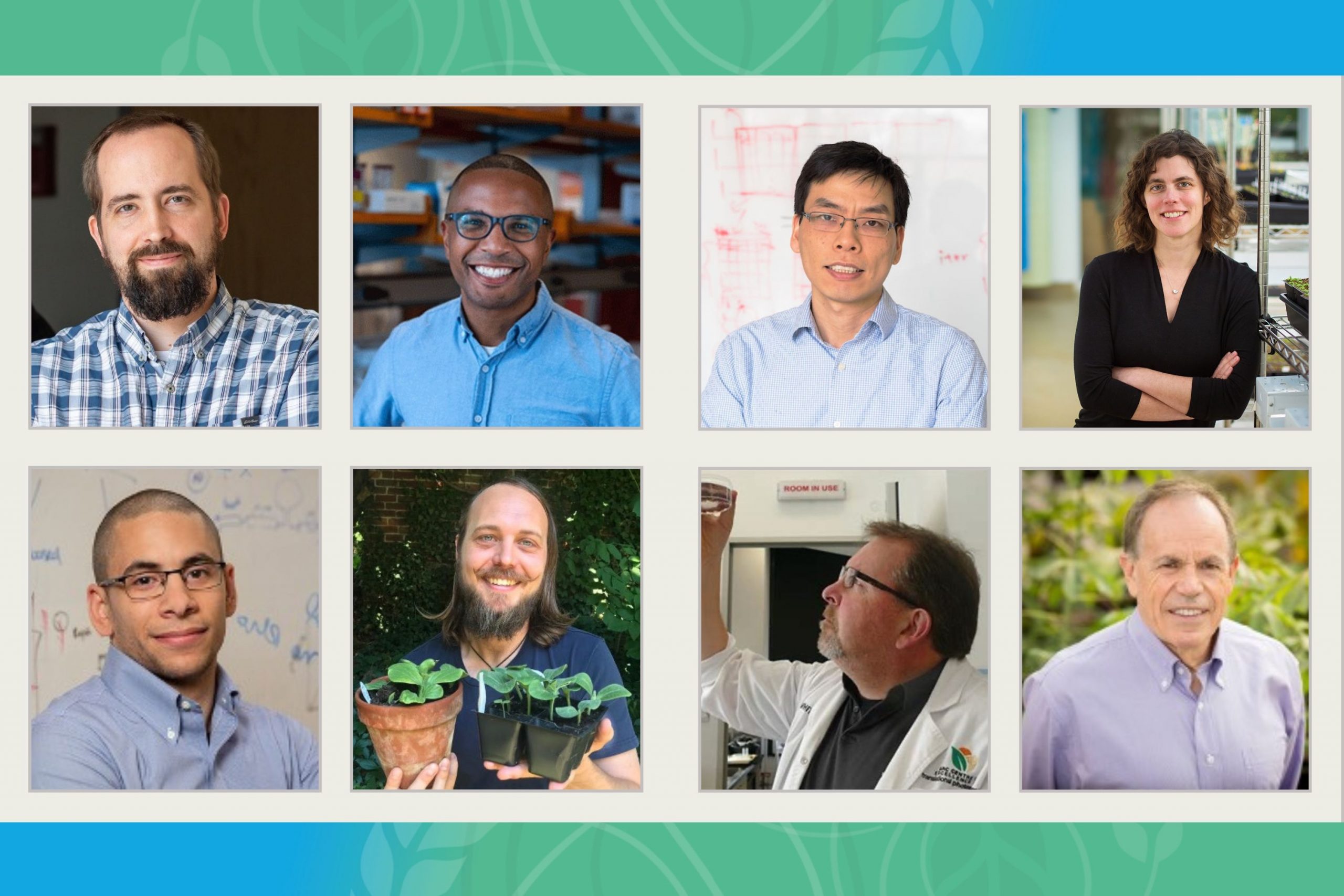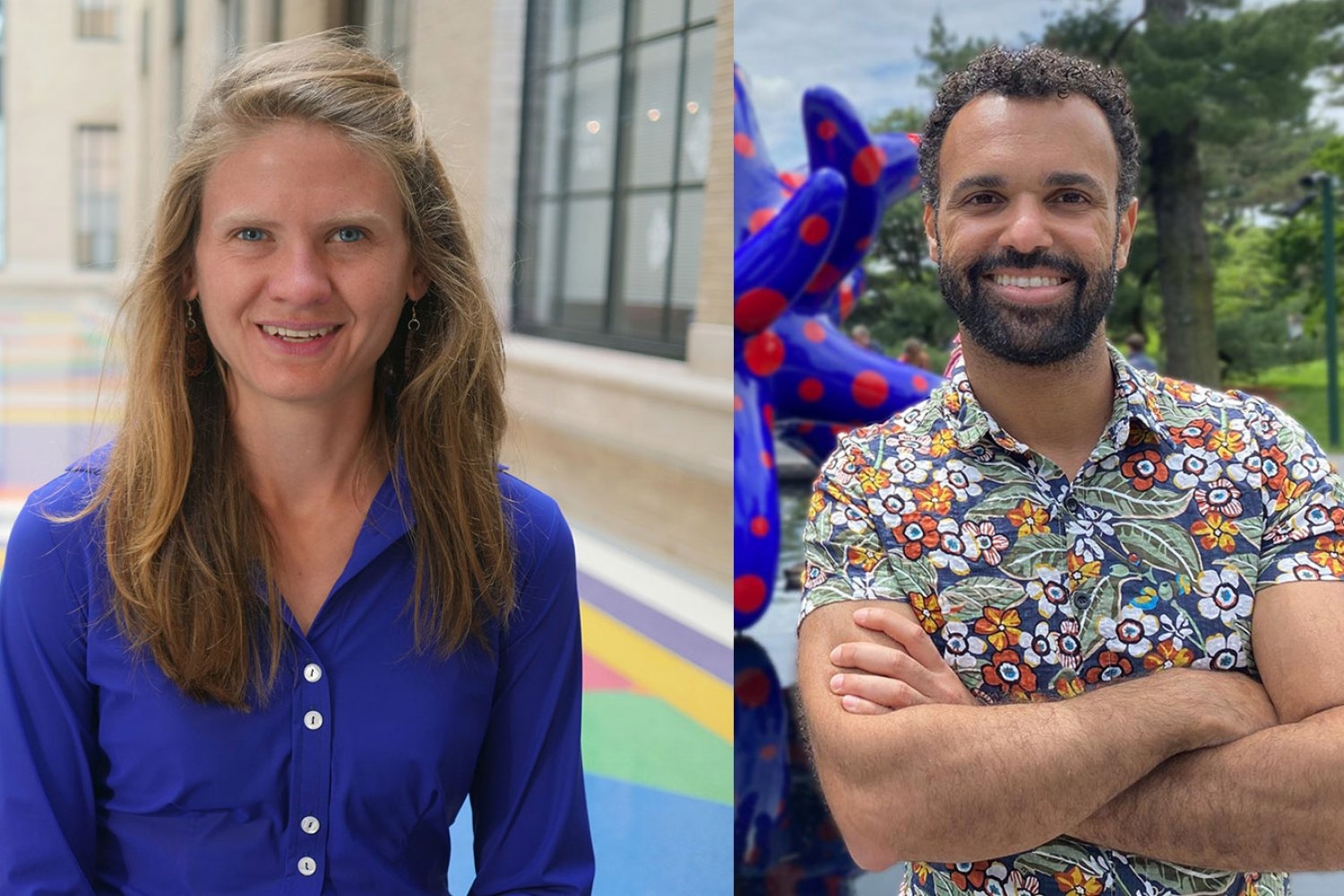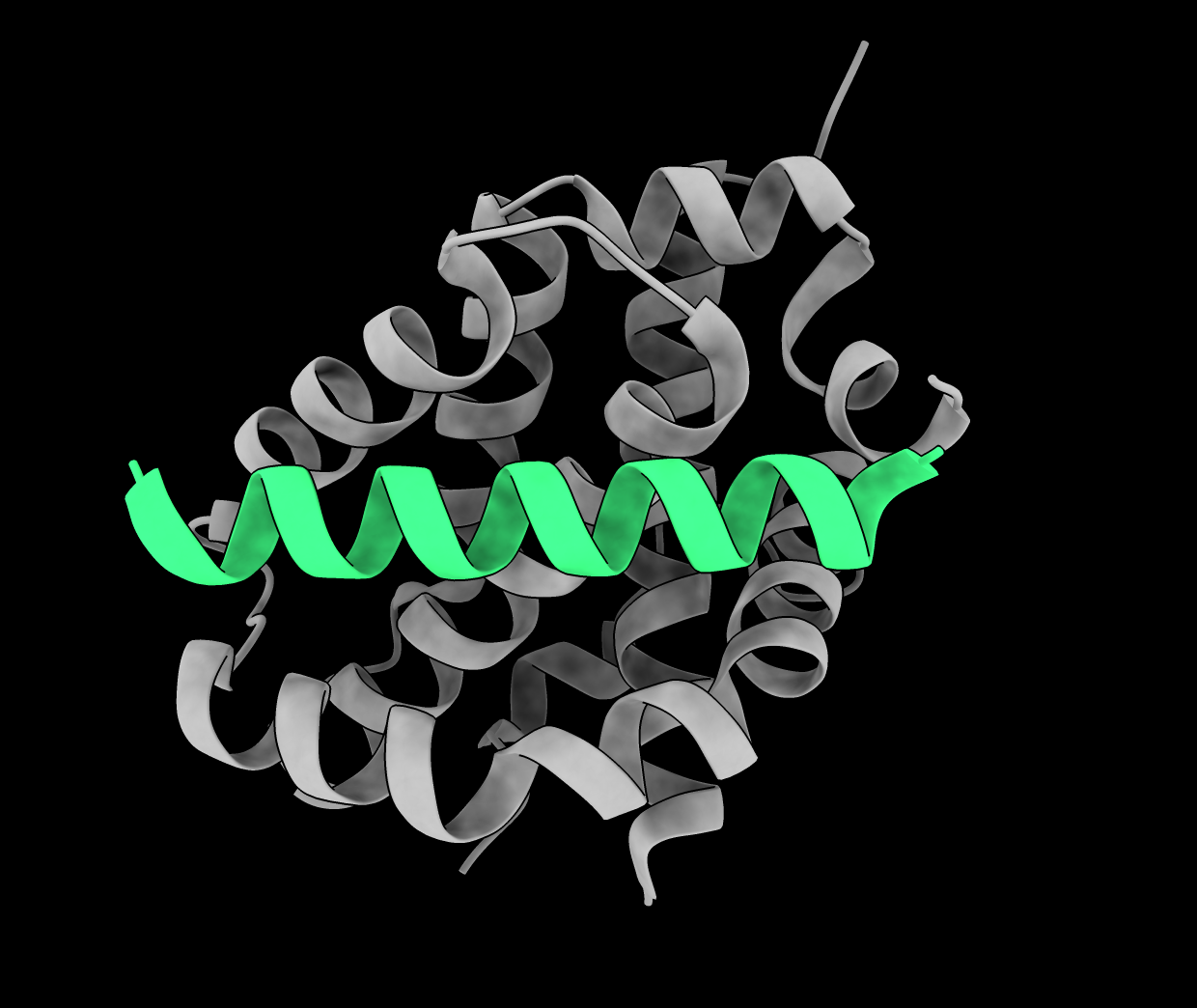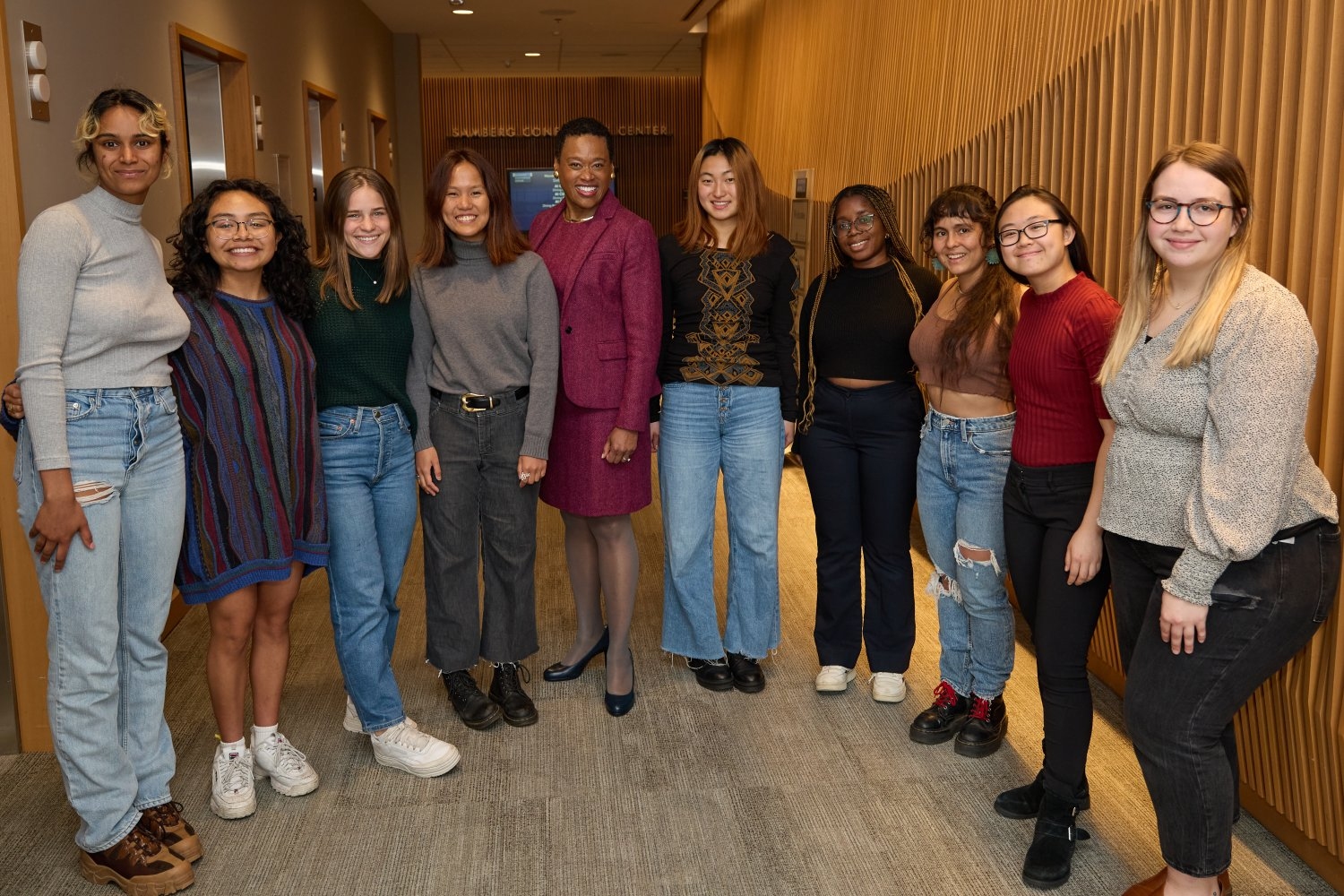
Violence Prevention and Response and the Institute Discrimination and Harassment Response Office celebrate students and employees for their efforts in combating sexual misconduct.
Vera Grbic | Office of the Chancellor
May 24, 2023
On April 24, MIT celebrated outstanding students and employees at the annual Change-Maker Awards for their diligent work to eradicate sexual misconduct and support survivors. These architects of positive change exemplify one of MIT’s core values: striving to make our community a more humane and welcoming place where all can thrive.
Hosted by MIT Violence Prevention and Response (VPR) and the Institute Discrimination and Harassment Response Office (IDHR), the awards are held each April to coincide with Sexual Assault Awareness Month. The awardees were recognized at a ceremony among invited senior leaders and the faculty, staff, and students involved in the Institute’s sexual misconduct prevention and response work. The awards were held in person for the first time since 2019, making this year’s celebration with fellow community members a very special event.
Chancellor Melissa Nobles opened the event by noting that, “Tonight’s honorees — individual students and staff members, a student group, and an entire office — are all amazing leaders and advocates. Day-in and day-out, they are making enduring contributions so that MIT is a more safe, supportive, respectful, and welcoming community for all.”
Nominated by peers and colleagues from across MIT, this year’s Change-Makers were selected for their multifaceted contributions, creative approaches, and breadth and depth of impact. Honors went to an undergraduate student; a graduate student; a student group; an employee group; and a PLEASURE Peer Educator of the Year. For the first time in Change-Maker Awards history, Provost Cynthia Barnhart recognized a longtime MIT employee and Change-Maker with a special recognition award.
The following students and employees are MIT’s 2023 Change-Makers:
- Outstanding Undergraduate Student: Ana Velarde, a third-year undergraduate student in biology and women’s and gender studies, is an MIT Change-Maker who goes out of her way to volunteer her time, lifts up fellow community members doing this important work, and regularly facilitates workshops that challenge harmful cultural norms around sexual violence and harassment. Velarde serves on PLEASURE’s Executive Committee and has led over 30 hours of peer-to-peer trainings. She co-chaired PLEASURE’s biggest event of the year — PLEASURE Week, a week-long series of educational events that reach hundreds of students — to support the student group’s mission of ending sexual violence and promoting healthy relationships. Velarde’s collaboration with MIT faculty also led to a Queer Faculty and Staff Panel.
- Outstanding Graduate Student: Jules Drean, a fifth-year PhD student in electrical engineering and computer science and Computer Science and Artificial Intelligence Laboratory affiliate, is this year’s graduate student Change-Maker. Drean advocates for survivors of sexual violence by educating peers about reporting options and supportive measures. He is also a member of the MIT student group Student Advocates for Survivors (SAS). Through his work with the Department of Electrical Engineering and Computer Science’s Thrive — a student group that supports all forms of diversity — he curated various initiatives, from a discussion group about a TV show that portrays violence to a self-care class. In all these endeavors, Drean’s thoughtful presence and unhurried compassion bring other graduate students along with him in this critical work.
- Outstanding Employee Group: The Office of Graduate Education (OGE) Graduate Support Staff were honored for helping graduate students navigate the aftermath of harassment or assault. They represent graduate students’ concerns on numerous committees and are helping create an online training module about navigating power dynamics. They have also taken on the day-to-day work of managing the Guaranteed Transitional Support Program, advancing funding for graduate students seeking a new lab or principal investigator. The team gladly stepped up to take on this new responsibility because they recognize the positive impact the program has on graduate students.
- Outstanding Student Group: The MIT Monologues (MITMo) is an annual show run by students who create and produce an adaptation of the Vagina Monologues tailored to the MIT community. These students embody what it means to be a Change-Maker as they use theater, one of our most powerful modes of societal change, to challenge and reflect on the harmful attitudes that support sexual violence. The show is a series of performances highlighting subjects ranging from sex, gender equity, and sexual assault. The performances also actively work to highlight the experiences of those from marginalized communities. MITMo donates all profits from the show to the Boston Area Rape Crisis Center, a local nonprofit agency dedicated to helping victims of sexual assault.
- Outstanding PLEASURE Peer Educator: Em McDermott, a graduating senior in biology, is this year’s PLEASURE Peer Educator Change-Maker. PLEASURE is a student-led peer education program that promotes healthy relationships and strives to eliminate sexual violence at MIT. As a Change-Maker, McDermott’s impact at MIT has been profound. This past year, they continued to serve on PLEASURE’s executive board as the communications chair. In the spring, they co-led a seminar on body positivity, body neutrality, and self-love, exploring body shaming systems and offering insight into how to reconnect with the self. Ultimately, McDermott leads with compassion and intentionally empowers others to make their voices heard, serving as a role model for peer educators for years to come.
- Special Recognition Award: Maryanne Kirkbride was recognized for her many years of creating change at MIT. As MIT’s deputy Institute community and equity officer and co-founder and former executive director of MindHandHeart, Kirkbride has been serving the MIT community for over 20 years. She is lauded for her creative and committed leadership at MindHandHeart, where she created and led a coalition of students, faculty, and staff who strengthened the fabric of the MIT community. At MindHandHeart she added the Department Support Program to enhance the welcoming and inclusive climate of each academic department. While Kirkbride was a nurse at MIT Medical, focused on public health, she helped secure a federal grant to fund the formation of Violence Prevention and Response, an office that provides support and advocacy for students who have experienced sexual violence. As Kirkbride will be retiring, the Change-Makers Committee felt it was important to celebrate the many ways she has worked to create a more welcoming and supportive MIT.

